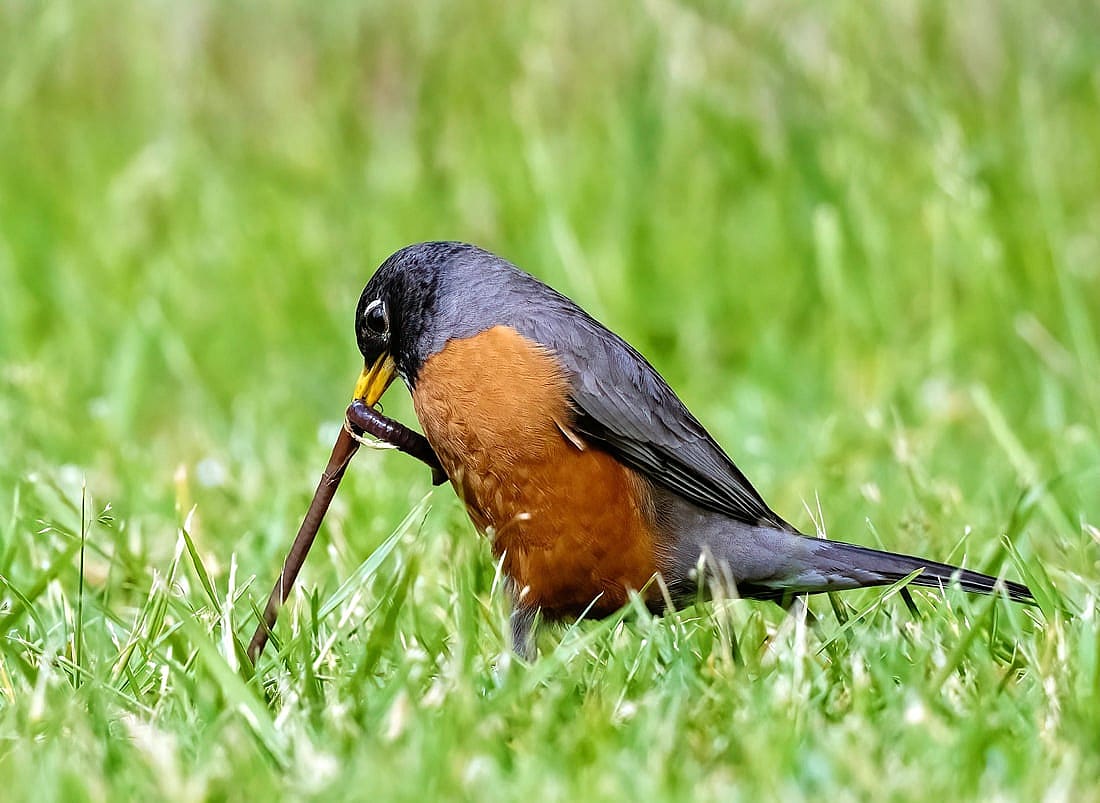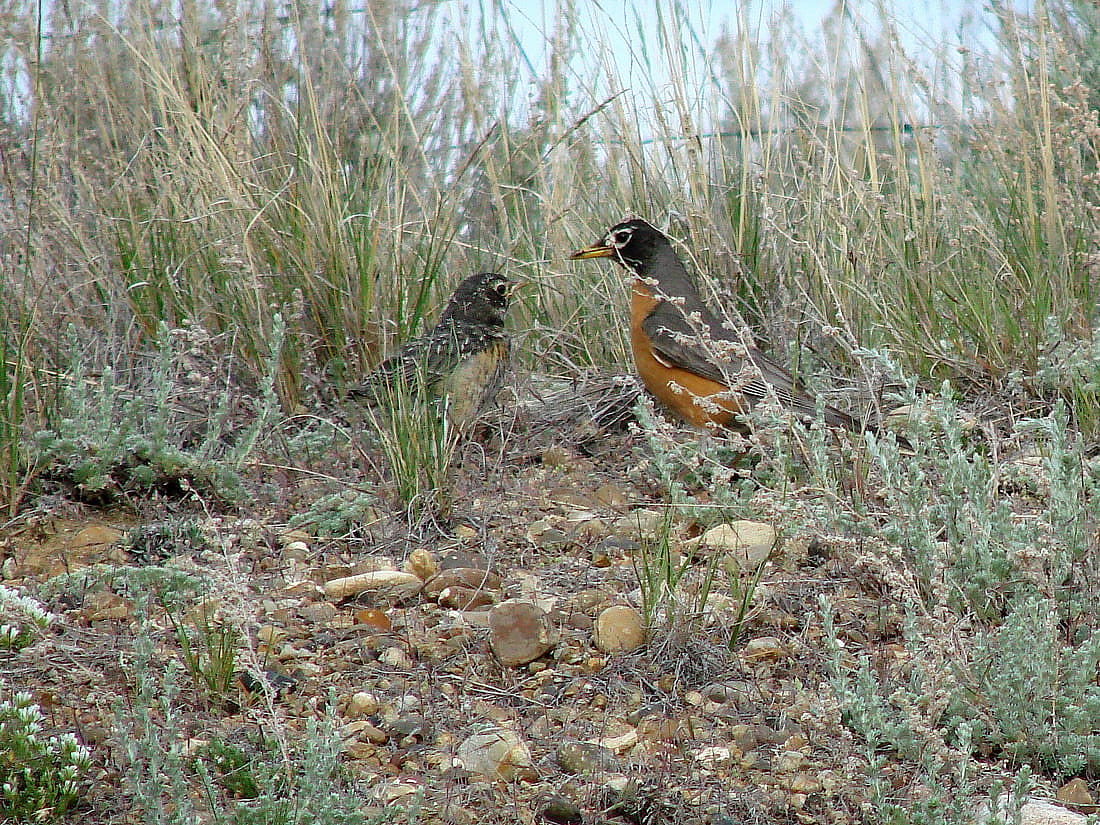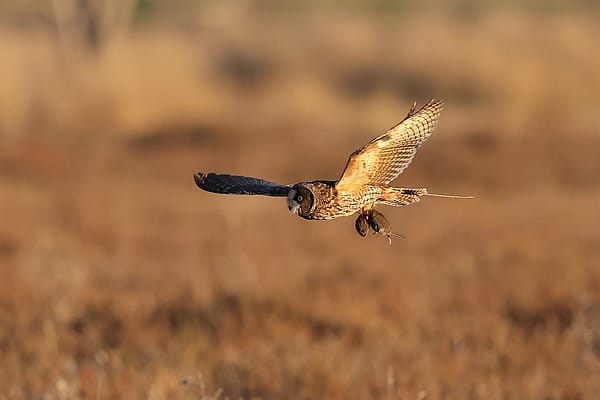
American Robins: Misbeliefs and Facts

The American Robin (Turdus migratorius) may be the most common bird in the USA. They are a frequent sight almost everywhere in the lower 48 states. Though they are comfortable in wilderness areas, we often see them in parks as well as our lawns.
American Robins also live in Mexico, and during their breeding season they range across Canada and as far north as Alaska. Because they are so common, many of us have beliefs based on our observations. These may be false or only partly true. In this blog, I will be discussing American Robin facts including those that may or may not support several of these familiar beliefs.
Are Robins the First Sign of Spring?
We tend to think of robins as messengers, announcing the first sign of spring. If you reside in Alaska and Canada, this would be true since these northern breeders typically migrate, spending winters in the southwest, Mexico, and along the Gulf coast.
On the other hand, in most of the U.S.A. they are full time residents.
When I was a young child, I believed that all robins migrated south in the winter. This turns out to be a Myth.

So Why Don’t I See Robins in Winter?
Robins are comfortable in most types of habitats, and can endure cold quite well. It is true that in many localities we have them around our yards all spring and summer, but with the arrival of fall they seem to disappear. Even so, many spend the winter within their breeding range. If not, it is likely they can be found elsewhere in your area, as well as other areas of your state.
They also tend to be quieter in winter, so you are less likely to hear them. Robins typically spend more time during winter roosting in trees and less time in yards. For this reason, robins will often move into nearby forests or other wooded areas, where you may find them in sizable flocks. These wooded habitats offer them more protection from winter weather and potentially a greater number of food sources.
The number of robins in the winter may vary depending on local weather conditions. Therefore they may migrate a short distance to locations where winter food is more plentiful. Here in Wyoming, I rarely see one around my house in winter. However, if I take a walk in an area where there are more trees and winter berries including Russian Olive Trees, I may spot them.

What Do American Robins Eat?
It’s a familiar sight to see American Robins tugging earthworms out of the ground leading many to believe that earthworms are the largest part of a robin’s diet.
In reality, robins eat a variety of different types of food including insects and fruit. According to Cornell’s All About Birds, what they eat can be influenced by the time of day. More earthworms seem to be eaten in the morning and more fruit later in the day. Perhaps this is where we get the saying, “the early bird gets the worm!”
The Forest Preserve District of Will County, Illinois, reports that worms make up about 15% to 20% of a robin’s diet in the summer and that robins can eat as much as 14 feet of earthworms in a day!
During the winter months robins feed heavily on fruit. Cornell reports that if robins dine on honeysuckle berries exclusively, they sometimes become intoxicated.
If you have ever wondered if Robins can hear worms when they are looking for them, listen to this short podcast which also describes the research method used to answer this question.
https://www.birdnote.org/listen/shows/does-robin-hear-its-worm
Their Song
Another misconception I had for years was that the American Robin’s song “cheer up, cheer up, cheerily” as the Audubon describes their call, was basically what they sang. The males may even begin singing this common song before sunrise. Males use this song to establish their territory and hopefully attract a mate.
However, American Robins use a variety of other calls. They often use short vocalizations for communicating with other robins, including alerting others to nearby danger. These may include a mumbled “chuck,” a sharp “yeep,” or a repeated “chirr” which rises in volume, along with other calls.
Besides vocal calls, female robins will aggressively clack their bills if approached while on their nest.
Listen to these short sound clips of various robin calls.
https://macaulaylibrary.org/asset/168300 recorded by Wil Hershberger
https://macaulaylibrary.org/asset/156241801 by Brad Walker
https://macaulaylibrary.org/asset/26488301 by Ian Davies
https://macaulaylibrary.org/asset/236798101 by Dave Slager
https://macaulaylibrary.org/asset/151051571 by Glen Chapman
https://macaulaylibrary.org/asset/68020331 by Nick Roth

Do Robins Choose the Same Mate Each Year?
American Robins don’t maintain their bonds over winter. Consequently they often find new mates each spring. However, if the same male and female survive the winter and return to the same territory, they are likely to mate again.
Males generally arrive at nesting grounds before females. They will sing, and chase off intruders entering their declared territory. When the females return, males will court her by strutting around, shaking their wings, and fluffing up their tail feathers. They will also puff up their white-striped throats.
Once the pair bond is established for that season, the female picks the actual nesting sight within the territory. Typically she will pick an unexposed area such as a tree branch hidden by leaves, or in a thicket. However, they will also sometimes nest on human made objects such as outdoor light fixtures.

Male and Female Activities During Nesting and Chick Rearing
The female does most of the nest building, however, the male will often bring materials for the nest. She will begin by forming a cup shaped nest using materials such as twigs, straw, grass, moss, feathers, and dry leaves. Mud is used to reinforce the nest. Lastly she will line the nest with dry grass.
The female robin will incubate the eggs for about 2 weeks. The male will continue to guard the territory and bring food to the female. After hatching, the young will remain in the nest for another two weeks. Both parents will work to feed the chicks.
When the young leave the nest they can not fly well and remain dependent on both parents for care, begging for food when the parents are nearby. These young remain on the ground for around two weeks until they are developed enough to fly and take care of themselves.

Nest Productivity
American Robins begin breeding earlier than many other song birds. As a result, they can have two or three broods in one breeding season. With each nesting the female lays 3-5 sky-blue eggs. This sounds like a lot of chicks being produce each year, thus a large growth in their population. However, on average, only 40 percent of nests are successful. Plus only 25 percent of those fledged chicks survive to November. According to Cornell, only about half of the robins alive in the fall will make it through the winter.
Robin nests can be very attractive to Brown-headed Cowbirds that will lay their own eggs in the nest, expecting the robins to hatch and raise their young. However, studies have found that robins are very good at recognizing these unwanted eggs and therefore will throw them out.
You may enjoy this short video, “Feeding Time at a Robin’s Nest.”
https://www.youtube.com/watch?v=AFjwLWH7reg

In Closing
American Robins belong to the thrush family and are easy to identify with their orange breast and early return to our yards at the end of winter. Perhaps this familiarity is why the robin is also the state bird of Connecticut, Michigan, and Wisconsin. Like trees budding after a long winter, people tend to welcome sightings of the American Robin back. Their almost unbiquitious presence during spring and summer means we may often take robins for granted. Consequently this may lead to conclusions about the lives of robins that may be wrong or only partly true. Nevertheless, if we examine them more closely, we find they lead interesting lives that we may not have previously noticed.
Photos:
American Robin bathing by Tony’s Takes Attribution-NonCommercial-NoDerivs 2.0 Generic
Three American Robins in Winter and Robin with a beak full of worms by Ingrid Taylar, Attribution-NonCommercial 2.0 Generic license
Robin Pulling worm out of ground by Doug Greenburg, Attribution-NonCommercial 2.0 Generic License
Robin Singing by TCDavis, Attribution-NonCommercial-NoDerivs 2.0 Generic
Female robin on nest, Four American Robins in a nest constructed on our back outdoor light, fledgling on deck, and parent and fledgling by author Anne Hay, Attribution-nonderivative License, https://www.flickr.com/photos/157982666@N07/
Written By
Anne Hay
Anne Hay has a Bachelor's degree in Elementary Education and a Master's in Computers in Education. She spent most of her working years teaching third grade at Livingston School in Cody, Wyoming. After retiring she began doing a variety of volunteer work for the Buffalo Bill Center of the West’s Draper Natural History Museum. Anne loves nature and has a concern for the environment. She believes that educating the public, so that they will have a better understanding and appreciation for the natural world, is very important. Because of this belief, volunteering at the Center is a perfect fit. She spends time in the Draper Lab, observing eagle nests for Dr. Charles Preston’s long-term research project on nesting golden eagles, writing observation reports of raptor sightings in the Bighorn Basin, and working with the Draper Museum Raptor Experience. Anne states that, “Having a bird on my glove, is one of my all time favorite things in life.”













